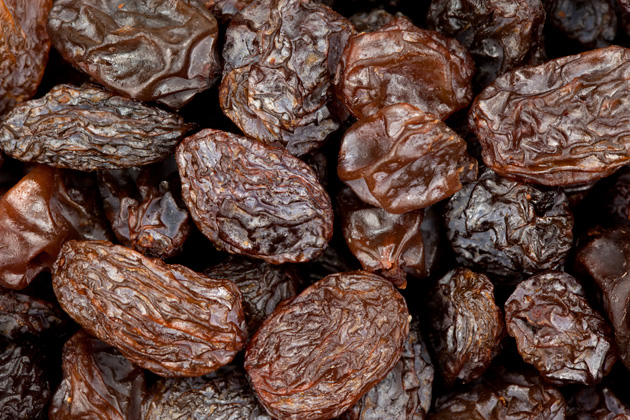New raisin varieties and improved production methods are at the forefront of California raisin producers’ interests. Robert Sahatjian of Victor Packing shared his perspective on varieties such as Sunpreme and Rais-One and cultivation methods.
“At this point I have mixed feelings about both varieties,” Sahatjian said of the Rais-One and Sunpreme raisins, “I’m going to hold off on planting any of those varieties until I see a little bit more success.”
As with most commodities, the success of the variety is dependent on a myriad of factors.
The Sunpreme variety offers the prospect of producing higher yields. According to the USDA, it is comparable in size and quality to the Thompson Seedless, but is less labor intensive because it does not require the cutting of canes. As a dry-on-the-vine fruit, Sunpreme and Rais-One raisins will dry out without needing to be placed on paper trays like most conventional varieties.
Sahatjian said one of the major drawbacks to both varieties is grape shatter. “I’m noticing that…there’s a lot of excessive shatter to both varieties prior to even getting a grape harvester in the field,” Sahatjian said.
Sahatjian is optimistic that industry researchers will find methods for overcoming grape shatter and improving the new raisin varieties so that cutting canes will not be necessary.
Labor Considerations with New Raisin Varieties
While hesitant to adopt some of the new varieties until more successes are proven, Sahatjian said that eventually, the positives are likely to outweigh the drawbacks. “Producing four tons to the acre and you lose half a ton to the ground, you’re probably better off planting that variety and going that way versus paying these high labor costs,” he said.
In addition to the need for accelerated research in raisin production methods, Sahatjian noted that raisin farmers are experiencing difficulties meeting increased hourly rates, as they are paying higher wages than their global competition, Sahatjian said.
As a result, producers are minimizing hand labor by increasing mechanization. “Mechanical dry-on-the-vine raisin harvesting and using that kind of equipment rather than hand labor,” Sahatjian said, as there are cost reductions associated with mechanical harvesting and pruning.
For those who are cautious about taking the risk on the latest varieties, his recommendation for growers is to stay in the loop by attending seminars and keeping up connections with researchers and fellow producers. Sahatjian said that Austin Hubbell with Marthedal Enterprises has been instrumental in pioneering some of the new raisin varieties. Hubbell has also been an outspoken proponent of cooperation to move the industry forward.
“He and I talk quite a bit and I agree with his statement that we’re all in this together as California raisin farmers,” Sahatjian said. “We need to stick together and stay united and help one another by sharing our success stories along with stories that maybe didn’t go so well. That’s the only way we’re going to learn and continue to grow.”
Contributing Author:
Lauren McEwen
AgNet West Intern











